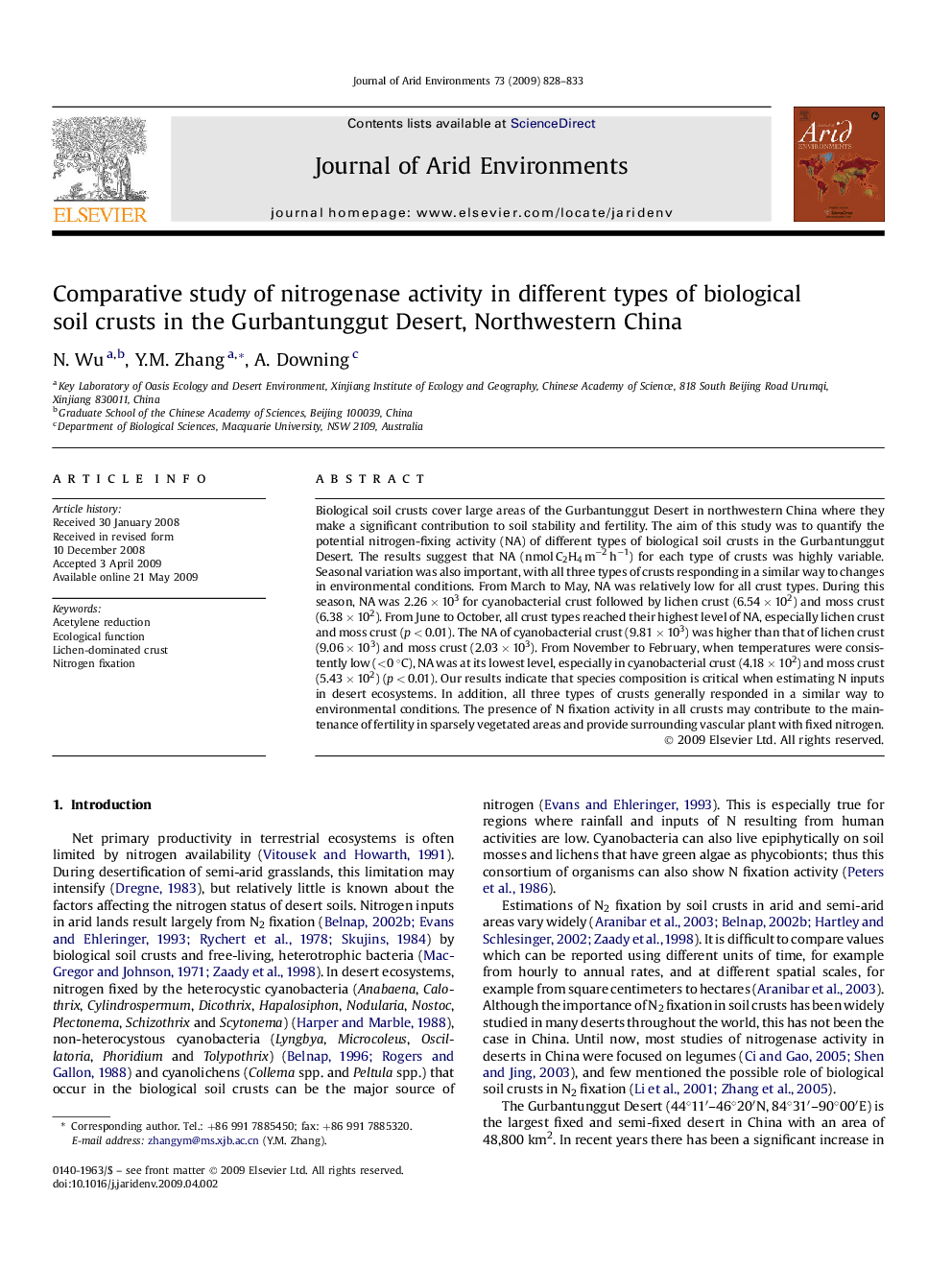| Article ID | Journal | Published Year | Pages | File Type |
|---|---|---|---|---|
| 4393842 | Journal of Arid Environments | 2009 | 6 Pages |
Biological soil crusts cover large areas of the Gurbantunggut Desert in northwestern China where they make a significant contribution to soil stability and fertility. The aim of this study was to quantify the potential nitrogen-fixing activity (NA) of different types of biological soil crusts in the Gurbantunggut Desert. The results suggest that NA (nmol C2H4 m−2 h−1) for each type of crusts was highly variable. Seasonal variation was also important, with all three types of crusts responding in a similar way to changes in environmental conditions. From March to May, NA was relatively low for all crust types. During this season, NA was 2.26 × 103 for cyanobacterial crust followed by lichen crust (6.54 × 102) and moss crust (6.38 × 102). From June to October, all crust types reached their highest level of NA, especially lichen crust and moss crust (p < 0.01). The NA of cyanobacterial crust (9.81 × 103) was higher than that of lichen crust (9.06 × 103) and moss crust (2.03 × 103). From November to February, when temperatures were consistently low (<0 °C), NA was at its lowest level, especially in cyanobacterial crust (4.18 × 102) and moss crust (5.43 × 102) (p < 0.01). Our results indicate that species composition is critical when estimating N inputs in desert ecosystems. In addition, all three types of crusts generally responded in a similar way to environmental conditions. The presence of N fixation activity in all crusts may contribute to the maintenance of fertility in sparsely vegetated areas and provide surrounding vascular plant with fixed nitrogen.
